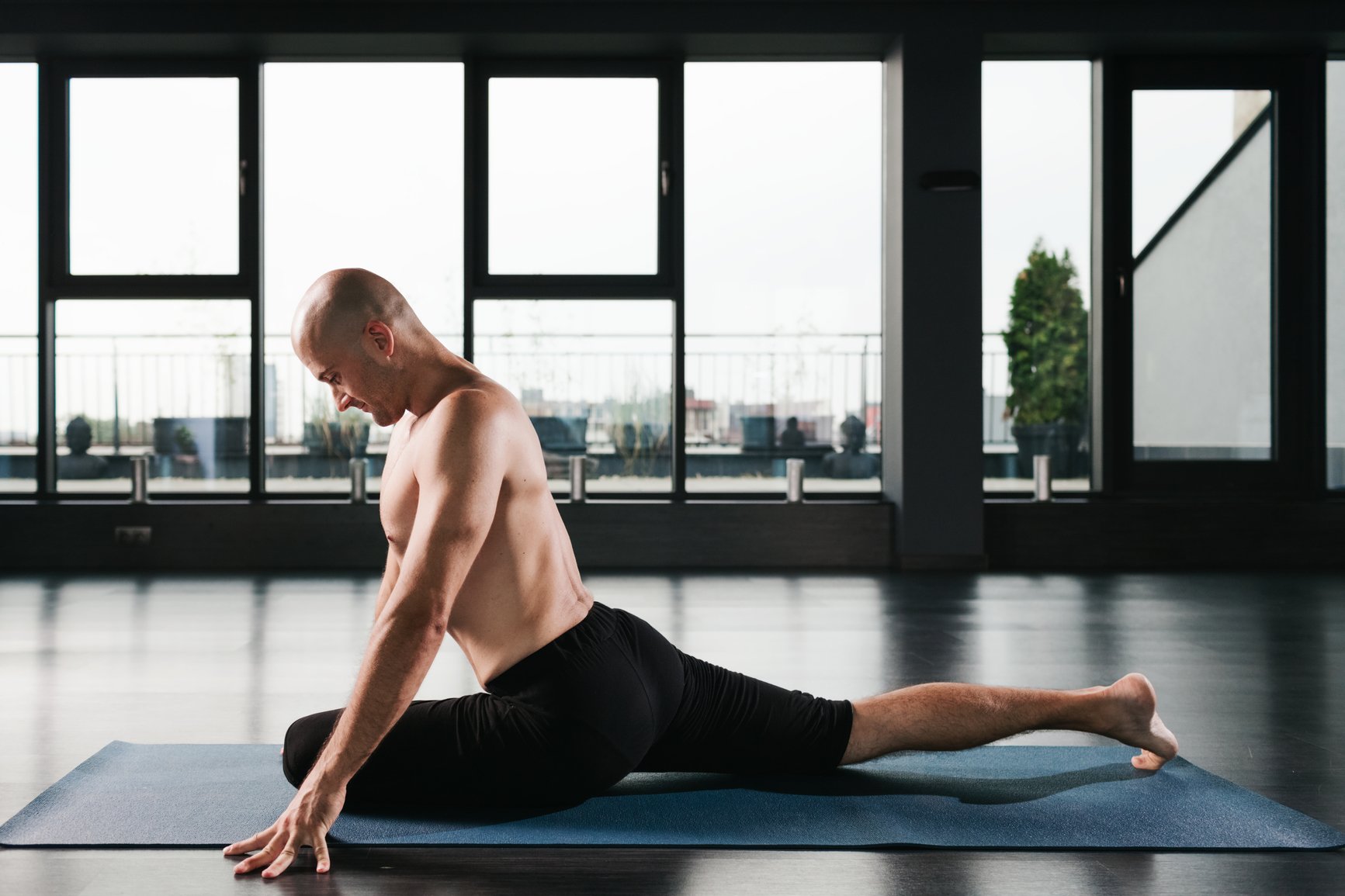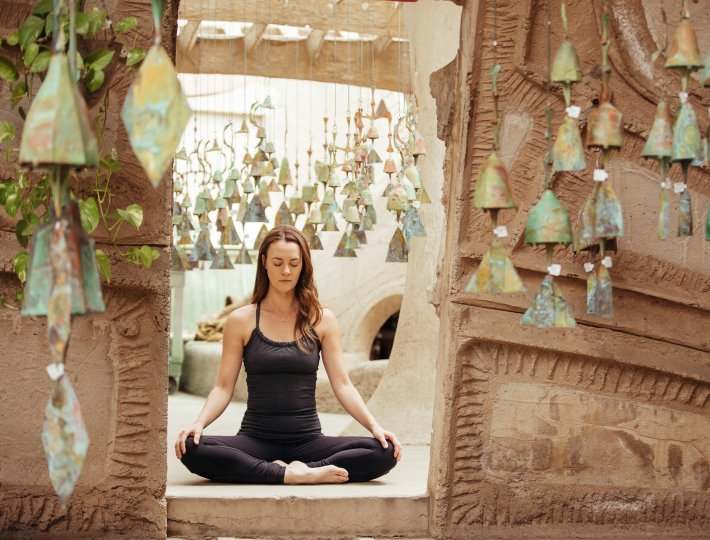Let’s say you’re in yoga class, and you’ve just discovered that part of your body is slightly less than zen. Perhaps your hamstrings sent you a high-pitched protest in Downward Facing Dog, or the muscles in your hip felt intensely tight when you move into Pigeon Pose. The instructor—who seems to be reading your mind—may then cue you to “breathe into” the sensation you feel. So you do, and voila! The tightness relents. You feel relief. Leaving you to wonder: Can I really steer my breath into specific parts of my body?
The answer, according to experienced yoga teachers and scientific research, is no. But that doesn’t mean the breath isn’t helpful, or that what you’re experiencing isn’t real. Your breath is causing a change. What you are doing is becoming more aware of it.
“We are not literally breathing into that area, but focusing on our breathing more attentively (more evenly and deeply) while bringing attention to the area where we feel tightness,” says Andrew Hillam, Sonima yoga advisor and director at Jois Yoga in Encinitas, California. “Deep, smooth breathing has a direct effect of calming the nervous system and brings the mind to a state of attention, to what we are doing in the present moment. The result is that tension held within the body can be more easily released.”
A dive into the physiology of stretching further supports this idea, and explains why deep breathing is such an essential healing tool.
The Science of Stretching
There’s a popular notion that stretching is a calming activity, but from a physiological perspective, what’s happening within our body is anything but relaxing.
“Stretching has been shown to decrease parasympathetic input,” says Arnold Nelson, Ph.D., a professor of kinesiology at Louisiana State University. The parasympathetic nervous system initiates the “rest and digest” functions within our body, and serves as the “yin” to the “yang” of the sympathetic “fight or flight” nervous system. They are both always on to some degree, but when activity of one goes down, signals from the other are stronger. Studies back this, showing that blood pressure and heart rate both increase during stretching. The body’s demand for oxygen also increases. Oxygen consumption also goes up at the stretched muscle itself, producing heat and carbon dioxide.
In short: stretching is a lot more “fight” than it is “rest.” But in most yoga postures, our goal is to release tension, not create it. How do we push back against this physiological urge to “fight”? Enter the breath.
Related: The Power of Breath for Physical and Emotional Balance
“By modifying our breathing we are able to effect the nervous system, which has a direct effect on our ability to relax the muscles,” Hillam says. In other words, slow deep breaths increase parasympathetic activity. You calm yourself down even when your body is signaling to do otherwise. And then you can turn your attention to what’s happening within the muscle itself.
Bohr’s Effect, in Effect?
Let’s take a moment to dispel the popular myth that you take in “more” oxygen when you breathe deeply. If you were to take a tool that measures the oxygen saturation in blood called a pulse oximeter and test people on the street, nearly everyone would score between 95 to 99 percent. Even shallow mouth breathers. The exceptions would be people suffering from serious disorders, like COPD.
So even people who breathe very poorly have a lot of oxygen in their system thanks to the body’s remarkable ability to adapt and recruit extra muscles (like the serratus, low back and hips) to do extra work when a main muscle (the diapragm) isn’t doing it’s job. This doesn’t mean you shouldn’t work on diaphragmatic breathing. You should, because doing so will use more of your lung tissue and allow the ancillary muscles being forced to work by inefficient breathing to take a rest. But the issue really isn’t oxygen intake. It’s oxygen transport.
Here’s where it’s helpful to understand a rule governing our circulation and respiratory systems that’s known as Bohr’s Effect. Named by Danish physician Christian Bohr, M.D., Ph.D., (and father to Nobel Prize-winning physicist Niels Bohr), the effect describes how the hemoglobin in our bloodstream release the oxygen they carry in the presence of carbon dioxide. Where there is an increase of carbon dioxide, such as working muscles, more oxygen will be released.
Since we know that muscles undergoing a static stretch produce more carbon dioxide, Bohr’s Effect would explain how more oxygen gets into those working tissues. So in a sense, we are “directing” the oxygen within our body by holding a position that puts a specific muscle to work. And as Hillam stated above, we are bringing more of our awareness to the process, becoming better able to notice the changes that take place.
Bring More Awareness to Your Breath Now
Hillam cautions that breathing practices are best performed with a knowledgable teacher.
“The breath is very powerful, and breathing practices can bring great benefit,” Hillam says. “But done incorrectly, [they] can also cause harm to the practitioner.”
A safe starting point, Hillam says, is to try breathing in and out through your nose only, focusing on making the breath deep and smooth without straining.
“The Yoga Sutras of Patanjali state that ‘yoga’ is bringing the mind under control and directing our attention in a sustained way, and that control of the breathing is necessary before being able to control of the mind,” Hillam says. “So a focus on breathing is very important.”











Comments (0)